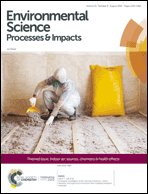Themed collection Indoor Air: Sources, Chemistry and Health Effects

Inside front cover
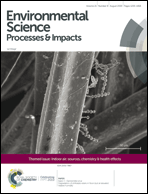
Contents list
Indoor air: sources, chemistry and health effects
Guest editors Delphine Farmer and Marina Vance introduce the “Indoor air: sources, chemistry and health effects” themed issue of Environmental Science: Processes & Impacts.

Environ. Sci.: Processes Impacts, 2019,21, 1227-1228
https://doi.org/10.1039/C9EM90035G
The atmospheric chemistry of indoor environments
The review article summarizes the wide variety of atmospheric chemistry phenomena that occur indoors.
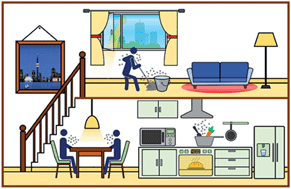
Environ. Sci.: Processes Impacts, 2020,22, 25-48
https://doi.org/10.1039/C9EM00386J
Illuminating the dark side of indoor oxidants
A review of the current understanding of oxidants and their precursors in indoor environments.
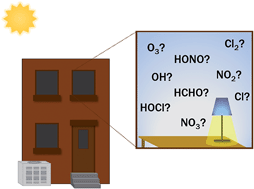
Environ. Sci.: Processes Impacts, 2019,21, 1229-1239
https://doi.org/10.1039/C9EM00111E
Modelling consortium for chemistry of indoor environments (MOCCIE): integrating chemical processes from molecular to room scales
We report on the development of a modelling consortium for chemistry in indoor environments that connects models over a range of spatial and temporal scales, from molecular to room scales and from sub-nanosecond to days, respectively.
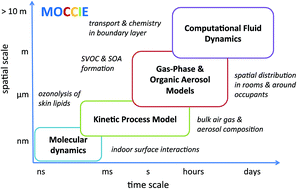
Environ. Sci.: Processes Impacts, 2019,21, 1240-1254
https://doi.org/10.1039/C9EM00123A
Design and evaluation of a portable PM2.5 monitor featuring a low-cost sensor in line with an active filter sampler
Measurement of particulate matter (PM) air pollution using a low-cost sensor and in-line filter sample enables gravimetric correction of the real-time PM data and chemical characterization of the collected PM.
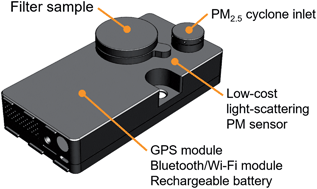
Environ. Sci.: Processes Impacts, 2019,21, 1403-1415
https://doi.org/10.1039/C9EM00234K
Overview of HOMEChem: House Observations of Microbial and Environmental Chemistry
The House Observations of Microbial and Environmental Chemistry (HOMEChem) study was a large-scale collaborative experimental investigation probing indoor air composition and chemistry.
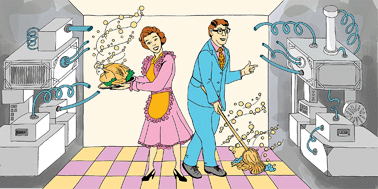
Environ. Sci.: Processes Impacts, 2019,21, 1280-1300
https://doi.org/10.1039/C9EM00228F
Assessing indoor gas phase oxidation capacity through real-time measurements of HONO and NOx in Guangzhou, China
The photolysis of nitrous acid (HONO) is the main initiation source of hydroxyl radical (OH) which in turn is the main oxidant controlling the oxidation capacity of the indoor atmosphere.
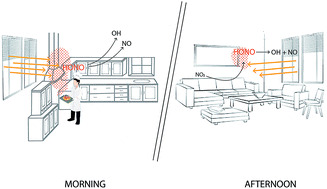
Environ. Sci.: Processes Impacts, 2019,21, 1393-1402
https://doi.org/10.1039/C9EM00194H
Emissions of DEHP from vehicle cabin materials: parameter determination, impact factors and exposure analysis
A VVR method is developed to measure the key parameters of DEHP from vehicular materials.
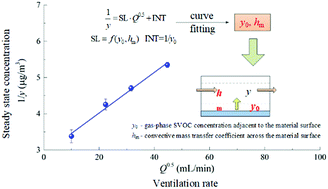
Environ. Sci.: Processes Impacts, 2019,21, 1323-1333
https://doi.org/10.1039/C9EM00200F
Total surface area in indoor environments
Objects in a room add 50% to its surface area beyond the walls, ceiling, and floor.
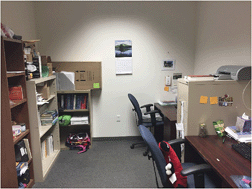
Environ. Sci.: Processes Impacts, 2019,21, 1384-1392
https://doi.org/10.1039/C9EM00157C
Role of location, season, occupant activity, and chemistry in indoor ozone and nitrogen oxide mixing ratios
Indoor field studies and in situ chamber experiments illustrate the interdependence of oxidants and oxidant precursors in residences.
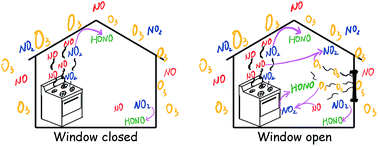
Environ. Sci.: Processes Impacts, 2019,21, 1374-1383
https://doi.org/10.1039/C9EM00129H
Residential water-soluble organic gases: chemical characterization of a substantial contributor to indoor exposures
Characterization of residential indoor air showed that organic acids make up a significant portion of water-soluble organic gases.
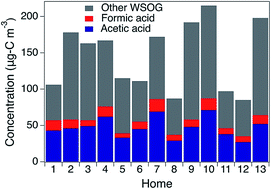
Environ. Sci.: Processes Impacts, 2019,21, 1364-1373
https://doi.org/10.1039/C9EM00105K
Secondary product creation potential (SPCP): a metric for assessing the potential impact of indoor air pollution on human health
Secondary Product Creation Potential (SPCP): a new metric for ranking the impact of volatile organic compounds on indoor air chemistry and human health.

Environ. Sci.: Processes Impacts, 2019,21, 1313-1322
https://doi.org/10.1039/C9EM00140A
Assessment of fine particles released during paper printing and shredding processes
In this study, we investigated the airborne particles released during paper printing and paper shredding processes in an attempt to characterize and differentiate these particles.
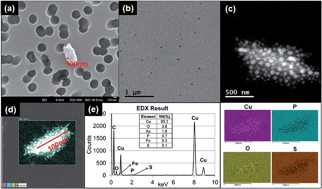
Environ. Sci.: Processes Impacts, 2019,21, 1342-1352
https://doi.org/10.1039/C9EM00015A
Distribution of five SVOCs in a model room: effect of vacuuming and air cleaning measures
We monitored the distribution of SVOCs in model rooms in dependence of temperature and cleaning measures over a period of six months.
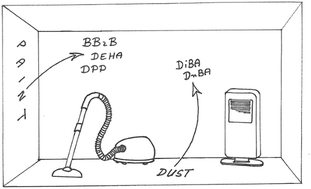
Environ. Sci.: Processes Impacts, 2019,21, 1353-1363
https://doi.org/10.1039/C9EM00121B
Human occupant contribution to secondary aerosol mass in the indoor environment
Occupancy in indoor spaces can contribute to indoor aerosol mass via reactions of oxidants such as ozone with skin constituents and subsequent partitioning of those oxidation product to existing aerosol.

Environ. Sci.: Processes Impacts, 2019,21, 1301-1312
https://doi.org/10.1039/C9EM00097F
Sources of isocyanic acid (HNCO) indoors: a focus on cigarette smoke
The sources and sinks of isocyanic acid (HNCO), a toxic gas, in indoor environments are largely uncharacterized.
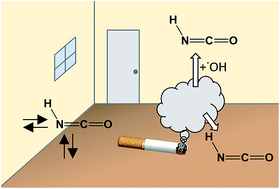
Environ. Sci.: Processes Impacts, 2019,21, 1334-1341
https://doi.org/10.1039/C9EM00107G
Degradation of phthalate esters in floor dust at elevated relative humidity
Emerging investigator series: Phthalate losses in floor dust are due to abiotic chemical degradation as well as microbial degradation of phthalates under elevated relative humidity conditions.
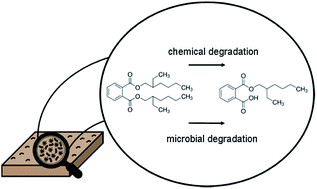
Environ. Sci.: Processes Impacts, 2019,21, 1268-1279
https://doi.org/10.1039/C9EM00050J
Emerging investigator series: primary emissions, ozone reactivity, and byproduct emissions from building insulation materials
Insulation materials affect indoor air by (i) releasing primary volatile organic compounds (VOCs) from enclosure cavities to the interior space, (ii) mitigating exposure to outdoor pollutants through reactive deposition (of oxidants, e.g., ozone) or filtration in infiltration air, and (iii) generating secondary VOCs and gas-phase byproducts from chemical reactions.
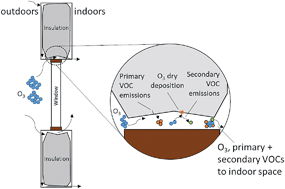
Environ. Sci.: Processes Impacts, 2019,21, 1255-1267
https://doi.org/10.1039/C9EM00024K
About this collection
Guest Edited by ESPI Editorial Board member Delphine Farmer (Colorado State University, USA) and Marina Vance (University of Colorado at Boulder, USA), this Themed Issue showcases advances in the area of indoor air chemistry, highlighting its diverse impact in the field of environmental science. The issue covers a range of topics (e.g., surface chemistry, microbial activity, photochemistry, exposure science) from an array of approaches (e.g., instrument development, measurements, modeling, and consideration of policy and health impacts of indoor air quality). We hope you enjoy reading the papers in this collection.
